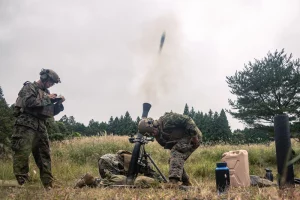Statistics, often perceived as a labyrinth of numbers and formulas, took center stage in the NDA 1 2024 Exam Math Class 2. In this live session, aspiring candidates delved into the fundamental concepts of statistics, including the definition of statistics, measures of central tendency, dispersion, and the nuances of correlation and regression. This article encapsulates the key takeaways from the class, offering a comprehensive guide for those navigating the statistical terrain.
The Foundation: Definition of Statistics
Beyond Numbers: Understanding the Essence
The class commenced with a foundational exploration of the definition of statistics. It wasn’t just about crunching numbers; students grasped the essence of statistics as a discipline that involves collecting, analyzing, interpreting, presenting, and organizing data. The significance of statistics in making informed decisions, a skill crucial for military leaders, was emphasized.
Measures of Central Tendency: Navigating the Core
Finding the Middle Ground
The journey through statistics led to the heart of data analysis – measures of central tendency. Aspirants delved into the concepts of mean, median, and mode, unraveling the ways to discern the central values in a dataset. Real-world examples illustrated the practical applications of these measures, providing a holistic understanding.
Dispersion Metrics: Beyond Averages
Exploring Variability
The class extended its reach to the dispersion metrics – range, mean deviation, and standard deviation. While measures of central tendency provide a snapshot of the center, dispersion metrics illuminate the variability within the data. Aspirants were equipped with the tools to gauge the spread of values, a skill indispensable for interpreting diverse datasets.
Coefficients: Standardizing Measures
Standardization for Comparison
Understanding the coefficients associated with measures became the next milestone. Whether it was the coefficient of variation, which standardized the standard deviation, or the coefficient of correlation, providing a normalized measure of linear association, candidates learned to quantify and compare statistical values on a standardized scale.
Correlation: Unraveling Relationships
Connecting the Dots
The statistical odyssey progressed into the realm of correlation – a crucial concept for deciphering relationships between variables. Aspirants explored the Pearson correlation coefficient, understanding the strength and direction of linear relationships. Real-life scenarios were presented to underscore the practical relevance of correlational analysis.
Regression: Predictive Insights
Forecasting through Regression
The class culminated with the exploration of regression – a powerful tool for predictive analysis. Aspirants grasped the nuances of linear regression, uncovering the ability to predict one variable based on another. Practical examples illuminated the application of regression analysis in scenarios ranging from strategic planning to resource allocation.
Connecting Theory with Practice: Real-World Examples
Bridging the Gap
Throughout the live class, the theoretical underpinnings of statistics were seamlessly connected with real-world examples. Whether it was analyzing military data or making decisions based on statistical insights, the class fostered an understanding of how statistical concepts are not confined to textbooks but are integral to informed decision-making.
Conclusion
Aspirants preparing for the NDA 1 2024 Exam ventured into the realm of statistics in Class 2 with a commitment to unravel the complexities of data analysis. This live session not only equipped them with the technicalities of measures of central tendency, dispersion, coefficients, correlation, and regression but also instilled a practical understanding of their applications. Armed with statistical prowess, candidates are better prepared to navigate the challenges that the NDA 1 2024 Exam may present, showcasing not just knowledge but a nuanced comprehension of statistical principles in action.



















